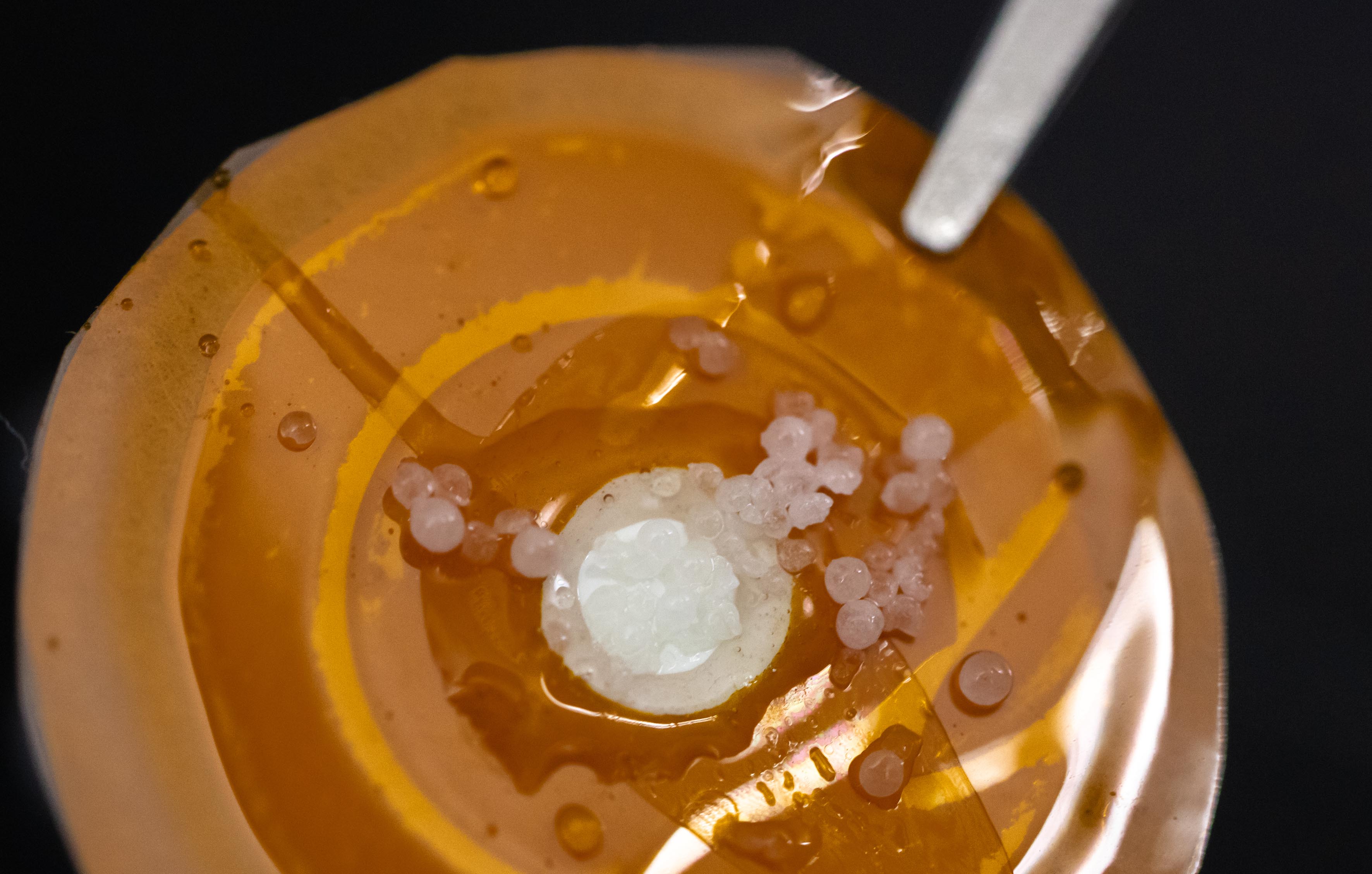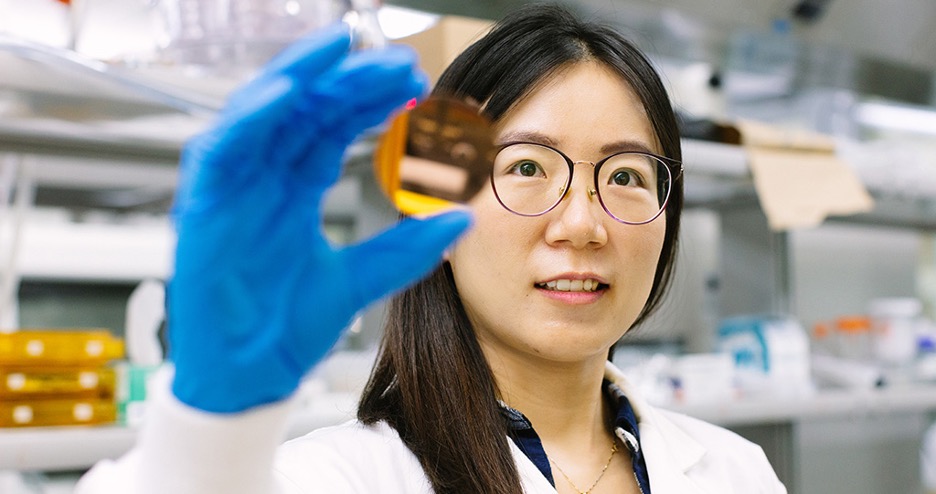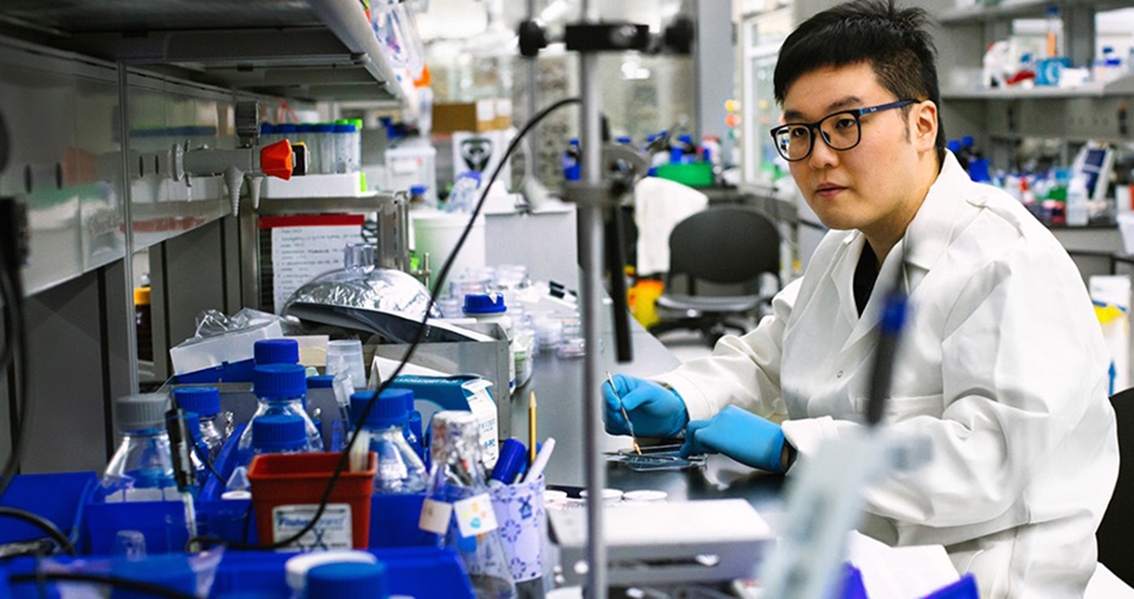Taking salt out of the water equation

KAUST researchers have developed a membrane with excellent water desalination performance in forward and reverse osmosis configurations. Photo: Anastasia Serin / KAUST 2022
Ultrathin polymer-based ordered membranes that effectively remove salt from seawater and brine could provide a promising alternative to existing water desalination systems, a KAUST-led team demonstrates.
"Water desalination membranes should simultaneously exhibit high water flux and high salt rejection," said Professor of Chemistry Dr. Yu Han, who led the study.
Carbon nanomaterials, such as carbon nanotubes and graphene, are expected to meet these requirements because of their unique surface chemistry and propensity to stack into channels with diameters smaller than one nanometer. Yet, channel alignment and stacking difficulties make their large-scale use in membranes challenging.

KAUST research scientist Yichen Cai and team are working to improve the antifouling property, mechanical strength and long-term chemical stability of ultrathin, polymer-based membranes for future practical applications. Photo: Anastasia Serin / KAUST 2022
"One way to address these limitations is through two-dimensional porous carbonaceous membranes with regular and uniformly distributed subnanometer-sized molecular transport channels," said first author Jie Shen, a postdoctoral student in Han's group whose research focuses on developing novel nanoporous materials thin-films, including 2D materials, MOFs and COFs.
However, these membranes are typically synthesized in solution, which promotes the random growth of a disordered three-dimensional structure with poorly defined micropores. KAUST professors Yu Han, Vincent Tung and Ingo Pinnau and former KAUST scientist Lance Li have developed a method that helps control the growth of two-dimensional conjugated polymer frameworks into ultrathin carbon films using chemical vapor deposition.

KAUST postdoctoral student Jie Shen was the first author of the paper, Fast water transport and molecular sieving through ultrathin ordered conjugated-polymer-framework membranes, published in Nature Materials. Photo: Anastasia Serin / KAUST 2022
The researchers deposited the monomer triethynylbenzene on atomically flat single-crystalline copper substrates in the presence of an organic base that acts as a catalyst. Triethynylbenzene bears three reactive groups that serve as anchor points for additional monomers. These groups show a 120-degree angle with respect to each other, generating organized arrays of well-defined cyclic structures that stack into subnanometer-sized rhombic hydrophobic channels.
The membrane displayed excellent water desalination performance in forward and reverse osmosis configurations, surpassing those containing advanced materials such as carbon nanotubes and graphene. It also showed strong rejection for divalent ions, as well as small charged and neutral molecules.
The researchers discovered that the water molecules formed a three-dimensional network inside the membrane instead of moving through the membrane along vertical triangular channels as one-dimensional chains. This explains the fast water transport through the membrane.
"This unexpected result revealed that the seemingly discrete vertical channels are actually interconnected by short horizontal channels that can be easily overlooked in the projected structural model," Han said.
The team is now working on improving the antifouling property, mechanical strength and long-term chemical stability of the membrane for future practical applications. They are also fine-tuning its surface-charge properties and channel sizes.
"Our ultimate goal is to provide a versatile multifunctional platform that meets the needs of various applications, such as ion sieving, single-molecule sensing and neural interfaces," Han said.
Related links
- Fast water transport and molecular sieving through ultrathin ordered conjugated-polymer-framework membranes, Nature Materials
- The Center for Research on Advanced Membranes and Porous Materials
- KAUST chemist Yu Han receives prestigious Humboldt Research Award
-
KAUST Discovery, communicating the latest stories about KAUST people and their scientific discoveries

